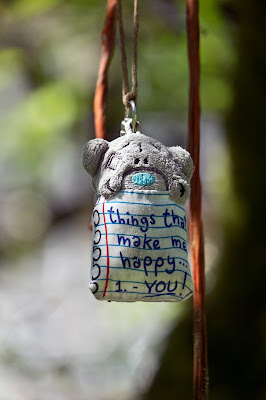I'd been telling Sal about this place ever since I last visited and we finally got the opportunity to visit in July. She is a good, thoughtful and caring person, plus she likes her bit of peace so I knew she would love the place. There is also loads and loads of things to photograph as well so off we set with our camera bags loaded.
The building that now houses Samyé Ling was originally a hunting lodge called Johnstone House. In 1965 the Johnstone House Trust was formed with the objectives of making the lodge's facilities available to the general public for study and meditation based on Buddhist and other religious teaching. It was founded by two spiritual masters, Dr. Akong Tulku Rinpoche and Chogyam Trungpa Rinpoche. Samye Ling was the first Tibetan Buddhist Centre to be established in the West and was named after Samye, the very first monastery to be established in Tibet.
The grounds are full of shrines, places for prayer and Stupas. The eight stupas line both sides of the entrance to Samye Ling next to the Butterlamp House (where1008 lamps are lit as a prayerful gesture of hope at 16:00 each day). When the Buddha died and passed into parinirvana (final liberation), his disciples cremated his body and interred his ashes in eight stupas, which were erected in different auspicious locations. Each stupa represent an important event in the life of the Buddha. The form and contents of the Stupa express the balance and purification of earth, water, fire, air and space.
As you enter the peace garden there is a Cloutie tree with colourful cloths tied to its branches. It is seemingly both a Scottish and Tibetan custom to make a wish and then tie a coloured ribbon to the tree and as the cloth fades the wish is carried off by the elements and hopefully one day comes true. There are also many small shrines and one in particular where visitors can leave a little memento or keepsakes. The last time I visited I left a loom band bracelet but this had broken down with the weather so there was no sign of it. Sal made and left one of her peace cranes but I fear that will suffer the same fate in time.
Another interesting section was the Prayer Wheel House. The prayer wheels apparently contain millions of mantras (short prayers) for peace and compassion which have been inscribed on paper soaked in saffron water and blessed in a special way. As you turn the prayer wheel clockwise it supposedly activates the blessing of the mantras, transmitting the energy of peace and compassion in all directions.
The last time I visited there were prayers going on at in The Inner Temple but not today, so I had a few quiet moments inside. It is absolutely stunning and so colourful and also has such an aura of serenity and goodness about it. I did sneak a quick photo of it on my phone but did feel a bit guilty about doing it for some reason.
I don't know how me and Sal manage it but, yet again, the eating gods weren't on our side. The person who ran the tearooms was off sick so they had to close it for the day. We were both starving as well so we had a few quiet moments sat beside the River Esk plus another quick look around and headed off in search of food.
We finally found it in the pretty little town of Langholm where we both tucked in to a panini and salad at the Truly Scrumptious café and boy did we need it. It was the first time Sal had visited the Buddhist Centre and like me she found it a most relaxing place to be. It is nice to share your special places with someone who is special to you.
 |
| Statue of the Buddhist God Nagarjuna |
 |
| Peace Garden Water Lily |
 |
| Prayer flag |
 |
| Prayer Wheel |
 |
| Peace Garden |
 |
| Peace Garden |
 |
| Peace Crane |
 |
| Peace Garden |
 |
| Peace Garden |
 |
| Prayer Fllag |
 |
| Statue of Guru Rinpoche |
 |
| Statue of Guru Rinpoche |
 |
| The Cloutie Tree |
 |
| The Peace Garden |
 |
| The eight stupas |
 |
| Stupa |
 |
| Wall carving |
 |
| To the tearooms |
 |
| The Temple |
 |
| The Inner Temple |
 |
| The River Esk |
 |
| The River Esk |
 |
| The Tara Healing garden |
 |
| The Tara Healing garden |
 |
| Statue of Guru Rinpoche |








No comments:
Post a Comment